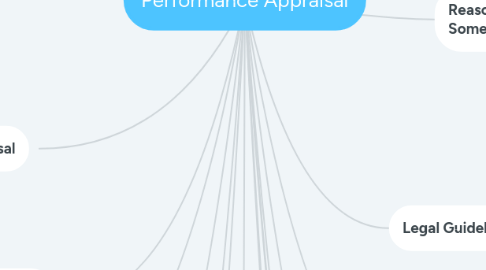Performance Appraisal
by Nursarafiena Syazwanie binti Suhaimi


1. Managerial Issues Concerning Appraisal
2. Developing an Effective Appraisal Program
2.1. Performance Standards
2.2. Calibration
3. Performance Standards Characteristics
3.1. Strategic Relevance
3.2. Criterion Deficiency
3.3. Criterion Contamination
3.4. Reliability
4. Sources of Perfomance Appraisal
4.1. Manager and/or Supervisor
4.2. Self-Appraisal
4.3. Subordinate Appraisal
4.4. Peer-Appraisal
4.5. Team Appraisal
4.6. Customer Appraisal
5. Cons of 360-Degree Appraisal
5.1. System is more complex in combining all responses
5.2. Feedback can be intimidating and lead to resentment
5.3. May be conflicting opinions
5.4. System requires training to work effectively
6. Training Performance Appraisers
6.1. Common rater-related errors
6.1.1. Error of central tendency
6.1.2. Leniency of strictness errors
6.1.3. Similar-to-me errors
6.1.4. Recency errors
6.1.5. Contrast and halo errors
6.2. Rater Errors : Training and Feedback
6.2.1. Rating Error Training
6.2.2. Feedback Skills Training
7. Performance Appraisal Method
7.1. Trait Methods
7.1.1. Graphic Rating Scale
7.1.2. Mixed Standard Scale
7.1.3. Forced Choice
7.1.4. Essay
7.2. Behavioral Methods
7.2.1. Critical Incident
7.2.2. Behavioral Checklist
7.2.3. Behaviorally Anchored Rating Scale (BARS)
7.2.4. Behavior Observation Scale (BOS)
8. The Balanced Scorecard
8.1. The appraisal focuses on four related categories
8.2. Ensuring the methods success
9. Appraisal Interview Guidelines
9.1. Invite Participation
9.2. Change Behavior
9.3. Minimize Cristism
9.4. Establish Goals
9.5. Ask for a Self-Assessment
9.6. Problem Solving Focus
9.7. Express Appreciation
9.8. Be Supportive
9.9. Follow up day by day
10. Performance Appraisal Program
10.1. Performance Appraisal
10.1.1. process to measure the performance of employee
10.2. Performance Management
10.2.1. process to create supportive environment to ensure employee performs at their best
